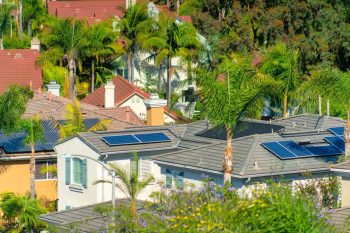Australian homeowner Shirley McRae thought she had her future figured out. At 74, her house was paid off, her affairs were in order, and she was finally enjoying retirement, she told ABC News. That was, until her home insurance bills started skyrocketing. What once cost less than $1,000 a year for full coverage now runs into the tens of thousands — assuming she can even get coverage at all. "Well, let me tell you, I had no idea that this was going to happen," McRae shared.
Across Australia, more homeowners are facing sticker shock on insurance premiums following repeated extreme weather events.
What's happening?
A report by the Insurance Council of Australia found that flood-prone and storm-battered regions are seeing skyrocketing insurance costs. In some parts of New South Wales and Queensland, flood coverage alone can cost as much as $30,000 a year.
After years of weather disasters, insurers are recalculating risks and passing the costs on to consumers. In some cases, they're pulling out of high-risk markets altogether. As ICA's Matthew Jones explained to ABC News, "Extreme weather events and their growing frequency and intensity are having an impact on all premiums."
And that's leaving homeowners like McRae wondering how they'll manage, or whether to risk going uninsured entirely.
Why is rising insurance so concerning?
It's a vicious cycle. The rising costs are driven by increased weather disasters, which in turn are fueled by human activity — specifically, the continued burning of dirty energy sources like oil and gas that pump heat-trapping pollution into the atmosphere, warming the planet and supercharging storms, floods, and fires.
Save $10,000 on solar panels without even sharing your phone number Want to go solar but not sure who to trust? EnergySage has your back with free and transparent quotes from fully vetted providers that can help you save as much as $10k on installation. To get started, just answer a few questions about your home — no phone number required. Within a day or two, EnergySage will email you the best local options for your needs, and their expert advisers can help you compare quotes and pick a winner. |
Homeowners in vulnerable regions are left with few choices: pay more, underinsure, or go without protection altogether. This puts not just their homes but their financial futures at risk, especially in lower-income or rural areas where options are limited.
Experts warn that as these disasters become more intense, so will the economic strain. According to UNSW's Professor Michael Sherris, "A person's home is their largest asset, so going uninsured or underinsured is a big, big risk."
What's being done about rising insurance costs?
In Australia, the ICA is urging the federal government to invest in long-term resilience strategies, including a proposed $30 billion flood defense fund to protect high-risk communities. Meanwhile, experts are also calling for more transparent insurance pricing, including a "traffic light" rating system to help homeowners understand a property's risk and the reasons behind soaring premiums.
Globally, the most impactful thing we can do is reduce our reliance on dirty energy and support clean energy policies moving forward. Everyday people can also explore critical climate issues to learn how to get involved in building a safer, more sustainable future for us all.
|
How much money do you plan to spend on home improvement projects this year? Click your choice to see results and speak your mind. |
Join our free newsletter for good news and useful tips, and don't miss this cool list of easy ways to help yourself while helping the planet.















